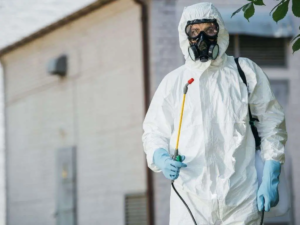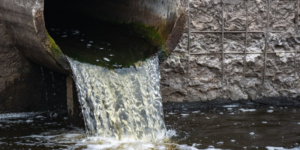When pests become so harmful that action is necessary, the goal is usually to suppress pest populations and prevent them from building up again to unacceptable levels.
Some pest control techniques involve monitoring pest populations, such as trapping or scouting. Other control techniques are based on natural forces that affect organisms, such as climate, natural enemies, or barriers to movement. Contact Pest Control North Vancouver BC now!

When pests invade homes, commercial properties, and other human-populated areas, they can cause destruction, spread disease, and be a nuisance. Recognizing the signs of a pest infestation can help property owners take swift action to eradicate them before they get out of hand.
Infestations are often obvious, like noticing rodent droppings or unexplained damage to furniture or the roof. However, some subtle indications can be difficult to see.
Odd Smells
If a home or business has an unusual scent that you can’t identify, it could be a sign of a problem. Pests leave behind various odors, including stale or rotting food remnants, urine, droppings, and sweat. These odors can be very unpleasant and often point to a serious problem that requires immediate attention.
Sprawling webs, discarded insect shells and wings, holes in walls and secluded corners are other indications that a pest infestation is underway. Look for the exterior signs of pests as well, such as ant hills, termite mud tubes and damaged vegetation. These signs indicate the presence of outdoor pests that can quickly move indoors in search of food and shelter.
Pests often come out during the day and are more noticeable than their nocturnal counterparts. If you notice frequent sightings of pests, particularly during the daytime, this is a significant red flag that needs to be addressed immediately.
Rodents, ants and roaches are notorious for their gnawing noises, but many other pests make their presence known with scratching sounds, scuttling or whining. Listen carefully for these telltale signs of unwanted pests, and you may be surprised at how easily you can spot a problem before it gets out of control.
Many pests build nests and hives in secluded or hard-to-reach areas. If you find shredded paper, fabric or insulation in nooks and crannies, this is a sure sign that there are pests hiding inside. Discovering a beehive in the attic or a wasp’s hive in the siding of your howasp’s necessitate immediate pest removal, as these pests are known to carry harmful diseases that can pose serious health risks for humans.
Damage
Tenants are often frustrated by the presence of pests like rodents (rats and mice), insects (cockroaches, bed bugs) and even larger animals (raccoons, squirrels). Landlords have a legal obligation to provide habitable living conditions, which includes keeping a property pest-free. Failing to do so may lead to complaints, lawsuits, and other costly problems.
While it is not possible to prevent every pest infestation, regular pest control can greatly reduce the likelihood of these problems and keep tenants happy and safe. Regular inspections also help to catch pests early, when they are easier and less expensive to treat.
Taking too long to take care of pest infestations can have a negative impact on a property’s value. Potential buyers wproperty’sy of a home or commercial building with a history of pest issues, leading to reduced sale prices and strained landlord/tenant relationships.
Rodents chew through anything they encounter, including electrical wiring, piping and drywall. This can lead to power outages, fire hazards and costly repair bills.
Pests are generally considered a nuisance, and they can also be harmful to human health and the environment. They can spread disease, cause contamination and destroy food and personal belongings. In addition, some pests are abrasive, obnoxious or have an unpleasant appearance (like spiders and silverfish). Others bite or sting (bees, mud dauber wasps, cluster flies and ants).
Landlords can face serious legal consequences if they do not implement adequate pest control measures. They must follow guidelines for the use of chemicals and pesticides, which are regulated by local authorities and must adhere to ecological protection laws. They must also identify the pests properly before using any control methods, as misidentification can result in the inappropriate use of chemicals or improper application techniques that may violate regulations and harm the environment or non-target species.
In shared spaces, landlords must work with neighbors to collaborate on pest control efforts. Failure to do so can result in ongoing infestations, disputes and strained landlord/tenant relationships. In some areas, certain pests are categorized as “notifiable” and must be reported to “authoritie” immediately. Familiarize yourself with local notifiable pests lists and report any sightings promptly to avoid legal complications.
Odors
Odors can be another telltale sign of a pest infestation. Rodents, especially mice and rats, produce a strong, musty, urine-like smell that will be more noticeable in areas where they’ve established nests or frequenthey’vevel. Cockroaches also produce an oily, musty odor, caused by the combination of their droppings and the shedding of their exoskeletons. These odors can be particularly difficult to mask, making them an important signal of a pest problem that should be addressed immediately.
In addition to affecting a property’s aesthetic and creating unproperty’siving conditions, untreated pest infestations can lead to a wide range of health issues. Many pests carry bacteria that can be transmitted to humans, causing illnesses such as food poisoning, allergic reactions and respiratory problems. Pests can also damage buildings and equipment, leading to costly repairs and reducing the value of a property.
Keeping pests out of a warehouse is essential to maintain product quality, protect staff and ensure the safety of end-consumers. Regular inspections and preventative treatments can help reduce the need for pest control services, but it’s equally important to recognize it’s an infestation does occur so that it can be addressed promptly.
Odors from pest-related waste, fecal matter and decaying organic materials can be difficult to ignore, as can the sounds of rodents gnawing on wood or wires in your home. Luckily, there are many different types of pests, so familiarizing yourself with their specific scents and paying attention to unexplained odors can make detecting a pest problem much easier.
Odor control has come a long way from the days when pest control usually meant spraying a smelly insecticide around your baseboards. Today, there are a variety of effective pesticides that are non-volatile and require little to no odor, so you can keep pests out without sacrificing your family’s comfort or compromising thefamily’sty of your property. A reputable pest control company can advise you on the best options for your situation. A good preventative treatment plan will include inspecting your home or business for possible entry points, recommending additional prevention techniques and providing regular preventative services such as rodent baits and non-toxic gels.
Noise
If left unchecked, pest infestations can cause a wide range of damage to homes and businesses. In addition, pests spread disease and can contaminate food, posing serious health risks. Rodents, for example, can carry salmonella and hantavirus, and cockroaches can trigger asthma symptoms and allergies. Pests also chew on electrical wires, posing a fire risk.
Commercial food producers are required to implement pest control measures as part of their Hazard Analysis and Critical Control Points (HACCP) systems in order to meet industry standards. The BRC Global Standard for Food Safety has a lot of detailed requirements related to pest control, including a requirement that senior management regularly assess the effectiveness of the pest management system and puts in place a plan to improve it.
Many food manufacturers employ their own in-house pest control teams, but most outsource this work to a qualified pest management company. These companies have a wide range of control methods at their disposal, from trapping and baiting to repulsion and fumigation. All methods of pest control have a degree of environmental impact, so careful consideration must be given to the choice of a specific method before its implementation.
It is best to avoid chemical pesticides whenever possible and to use physical removal techniques like trapping or repulsion. If chemicals are necessary, it is important to carefully read and follow the manufacturer’s instructions on how tmanufacturer’suct safely and minimize off-target impact. It is also critical to keep children, pets, fish and wildlife out of the area until the product dries to prevent exposure.
Using a natural predator to control pests, rather than killing them with chemicals, is generally considered more environmentally friendly than conventional pesticides. However, it is also important to study the environment carefully and to identify the pest species to be controlled in order to tailor a biological control method to it. This will be less expensive and will reduce the chances of off-target damage.




